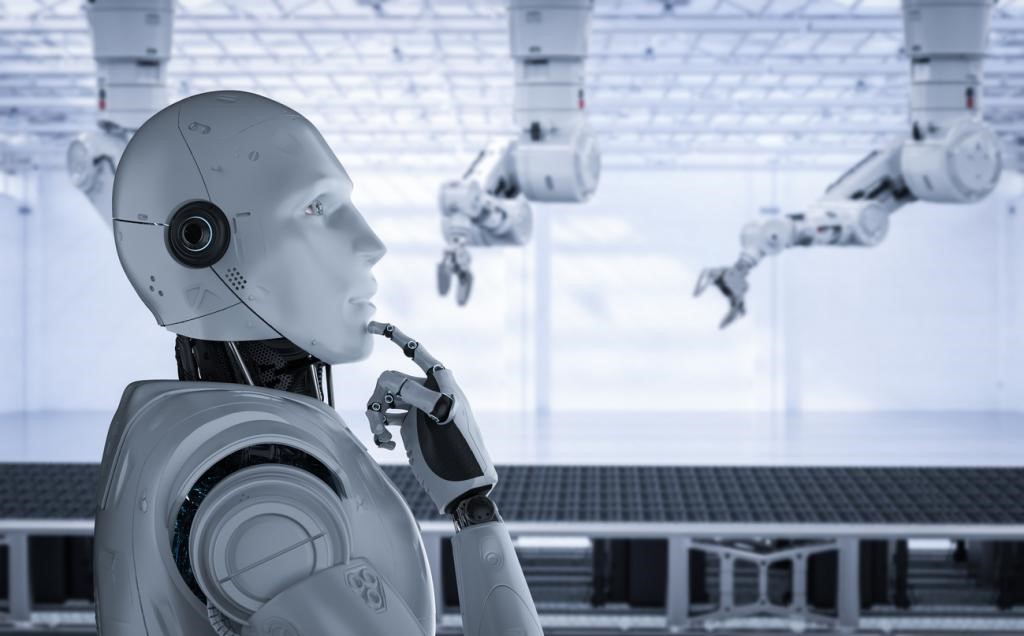Description

Disclaimer: Copyright infringement not intended.
Context
The development of a metabolic protein capable of withstanding higher temperatures, facilitated by an AI-led robotic lab known as SAMPLE, represents a significant leap forward in protein engineering.
Details
Design of SAMPLE
- Autonomous Robotics Lab: SAMPLE (Self-driving Autonomous Machines for Protein Landscape Exploration) is an autonomous system designed by scientists from the biochemistry department of the University of Wisconsin–Madison.
- AI Integration: The platform incorporates artificial intelligence capable of learning protein sequence-function relationships.
Functionality of SAMPLE
- Autonomous Protein Engineering: SAMPLE operates as a self-driving lab, autonomously carrying out tasks typically performed by protein engineers.
- Learning Process: The AI within SAMPLE learns how a protein's structure influences its function, akin to a chef learning ingredient combinations for a new recipe.
Workflow of SAMPLE
- Design Phase: Once the AI has acquired knowledge, it uses that information to design new protein structures with desired properties, in this case, proteins capable of withstanding higher temperatures.
- Experimental Execution: Robotic instruments under SAMPLE's control perform the experiments, assembling and testing the newly designed proteins.
- Iterative Learning: Feedback from the experiments enhances the AI's understanding, creating a continuous learning cycle.
Experiment
- Target Protein: The researchers focused on glycoside hydrolase, a type of protein.
- Objective: The goal was to create versions of this protein that could function at higher temperatures.
- Temperature Resistance: After 20 rounds of experimentation over six months, SAMPLE successfully produced new enzyme versions capable of functioning at temperatures at least 12 degrees Celsius higher than the initial proteins.
- Industrial Relevance: Proteins resistant to higher temperatures are valuable in industries such as biofuels and medicine.

Advantages of SAMPLE
- Time Efficiency: The AI-led robotic lab significantly speeds up the protein engineering process. The experiment that took six months with SAMPLE would have taken about a year if done manually by a human.
- Reduced Human Intervention: SAMPLE operates without constant human intervention, reducing the chances of error and improving efficiency.
Challenges
- Biological Complexity: While SAMPLE is a significant advancement, biological experiments are complex, and integrating advanced analytical instruments for broader applications remains a challenge.
- Potential for Unknown Proteins: SAMPLE's approach to learning and optimization opens the possibility of discovering proteins with functions currently unknown or considered too complex for traditional methods.
Role of Human Researchers
- Critical Involvement: Human researchers are still essential for designing initial hypotheses, selecting target functions, and interpreting broader implications.
- Enhanced Capabilities: SAMPLE does not replace human researchers but enhances their capabilities, allowing them to focus on more creative and complex aspects of protein engineering.
About Enzymes
- Enzymes are biological molecules that act as catalysts in living organisms, facilitating and accelerating various biochemical reactions.
- They play a crucial role in the functioning of cells and metabolic processes.
- Enzymes lower the activation energy required for a chemical reaction to occur, making reactions more efficient.
Structure of Enzymes:
- Protein Nature: Enzymes are predominantly composed of proteins, which are made up of amino acid chains.
- Active Site: The active site is a specific region on the enzyme where the substrate binds, and the catalytic reaction takes place.
- Lock-and-Key Model: The interaction between the enzyme and substrate is often described using the lock-and-key model.
Enzyme Classification:
- Based on Reaction Type: Enzymes are classified into six main categories: oxidoreductases, transferases, hydrolases, lyases, isomerases, and ligases.
- Based on Substrate: Enzymes are often named after their substrate, with the suffix "-ase."
Enzyme Kinetics:
- Michaelis-Menten Equation: Describes the rate of enzymatic reactions concerning substrate concentration.
- Saturation: Enzymes exhibit saturation kinetics, where at a certain substrate concentration, the reaction rate plateaus.
Factors Influencing Enzyme Activity:
- Temperature: Enzymes have optimal temperature ranges for activity, and extreme temperatures can denature them.
- pH: Enzymes function best within a specific pH range.
- Cofactors and Coenzymes: Many enzymes require additional non-protein components for optimal activity.
Enzyme Inhibition:
- Competitive Inhibition: Molecules compete with the substrate for binding to the active site.
- Non-Competitive Inhibition: Inhibitors bind to a site other than the active site, altering the enzyme's shape.
Regulation of Enzyme Activity:
- Allosteric Regulation: Molecules bind to sites other than the active site, influencing enzyme activity.
- Feedback Inhibition: The end product of a metabolic pathway inhibits an enzyme earlier in the pathway.
Applications of Enzymes:
- Biotechnology: Enzymes are widely used in various industries, including food, detergent, and pharmaceuticals.
- Medical Applications: Enzyme assays are used in diagnosing diseases, and some enzymes are used as therapeutic agents.
Notable Enzymes:
- DNA Polymerase: Involved in DNA replication.
- RNA Polymerase: Facilitates transcription of RNA from DNA.
- Catalase: Catalyzes the breakdown of hydrogen peroxide into water and oxygen.
Enzyme Disorders:
- Genetic Deficiencies: Some disorders result from the lack or malfunction of specific enzymes.
- Phenylketonuria (PKU): Caused by a deficiency of the enzyme phenylalanine hydroxylase.

Conclusion
In summary, SAMPLE demonstrates the potential of AI-led robotic systems to accelerate scientific discovery in protein engineering and synthetic biology, highlighting the synergy between automation and human expertise in advancing research and innovation.
|
PRACTICE QUESTION
Q. Evaluate the significance and potential impact of the Self-Driving Autonomous Machines for Protein Landscape Exploration (SAMPLE) platform in the field of protein engineering. (250 Words)
|










